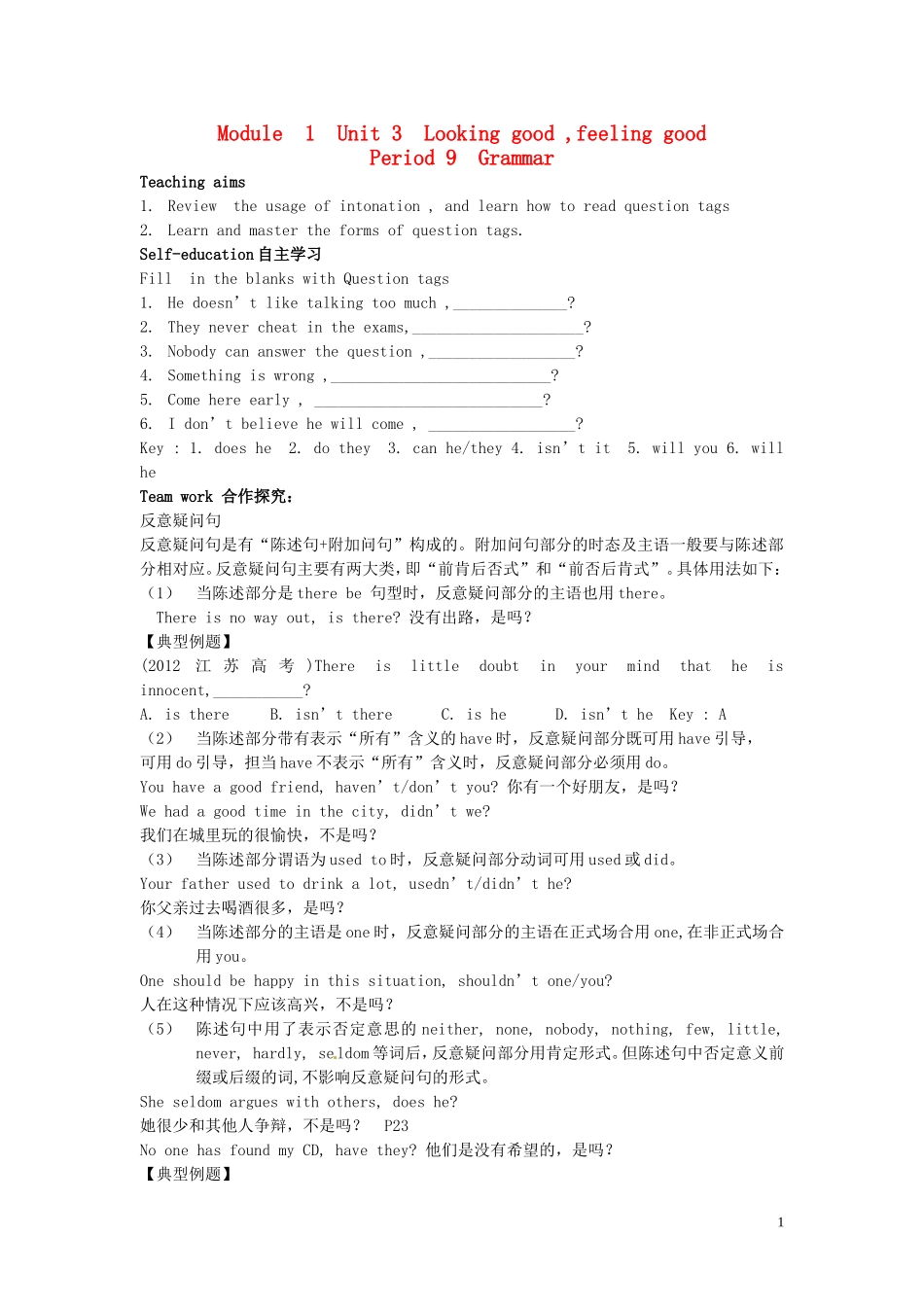Module 1 Unit 3 Looking good ,feeling goodPeriod 9 GrammarTeaching aims 1. Review the usage of intonation , and learn how to read question tags2. Learn and master the forms of question tags.Self-education 自主学习Fill in the blanks with Question tags1. He doesn’t like talking too much ,______________?2. They never cheat in the exams,_____________________?3. Nobody can answer the question ,__________________?4. Something is wrong ,___________________________?5. Come here early , ____________________________?6. I don’t believe he will come , __________________?Key : 1. does he 2. do they 3. can he/they 4. isn’t it 5. will you 6. will heTeam work 合作探究:反意疑问句反意疑问句是有“陈述句+附加问句”构成的。附加问句部分的时态及主语一般要与陈述部分相对应。反意疑问句主要有两大类,即“前肯后否式”和“前否后肯式”。具体用法如下:(1)当陈述部分是 there be 句型时,反意疑问部分的主语也用 there。 There is no way out, is there? 没有出路,是吗?【典型例题】(2012江 苏 高 考 )There is little doubt in your mind that he is innocent,___________?A. is there B. isn’t there C. is he D. isn’t he Key : A(2)当陈述部分带有表示“所有”含义的 have 时,反意疑问部分既可用 have 引导,可用 do 引导,担当 have 不表示“所有”含义时,反意疑问部分必须用 do。You have a good friend, haven’t/don’t you? 你有一个好朋友,是吗?We had a good time in the city, didn’t we?我们在城里玩的很愉快,不是吗?(3)当陈述部分谓语为 used to 时,反意疑问部分动词可用 used 或 did。Your father used to drink a lot, usedn’t/didn’t he?你父亲过去喝酒很多,是吗?(4)当陈述部分的主语是 one 时,反意疑问部分的主语在正式场合用 one,在非正式场合用 you。One should be happy in this situation, shouldn’t one/you?人在这种情况下应该高兴,不是吗?(5)陈述句中用了表示否定意思的 neither, none, nobody, nothing, few, little, never, hardl...


